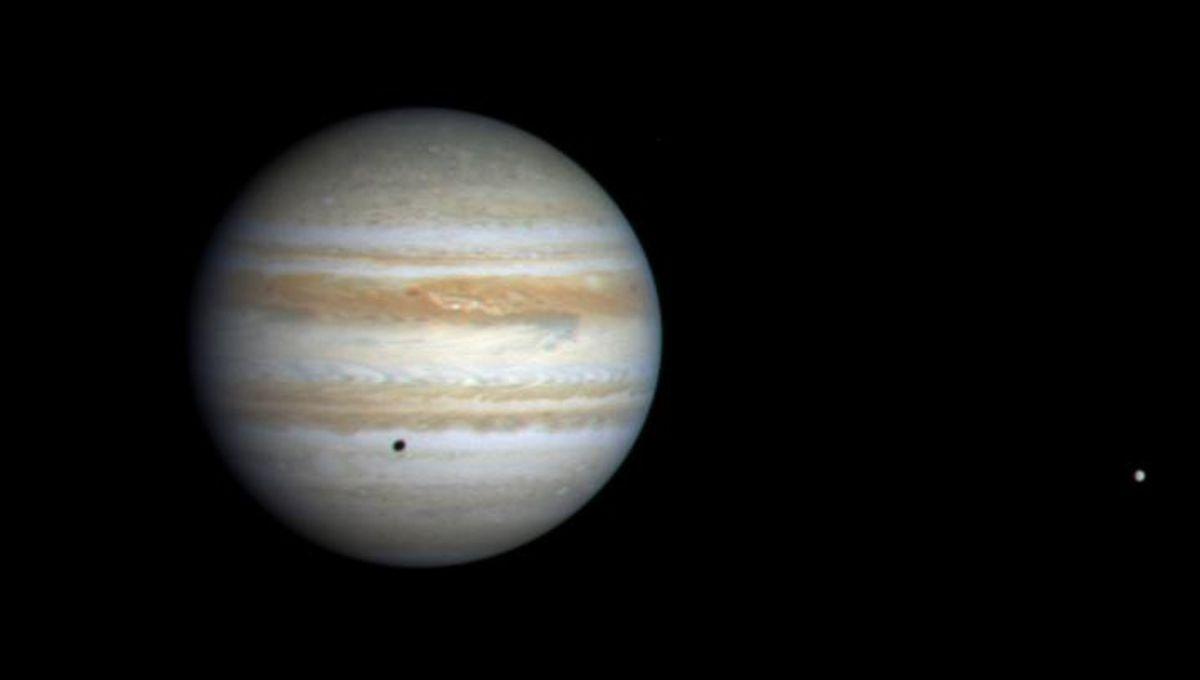-
Noticias Feed
- EXPLORE
-
Páginas
-
Blogs
-
Foros
Does Jupiter Have A Solid Core, And If So, How Big Is It?

Does Jupiter Have A Solid Core, And If So, How Big Is It?
One of the first things anyone interested in the Solar System learns is that out beyond the asteroid belt lurk the gas giants, of which Jupiter is the largest. Does that mean that Jupiter and its peers are pure gas? Or somewhere deep within is there a solid core?
The rest of this article is behind a paywall. Please sign in or subscribe to access the full content. Just as there’s a big difference between being dead and mostly dead, being all and mostly gas are quite different things. The Sun has a core, but like the rest of it, it’s composed of plasma – but the question of whether Jupiter has a solid center remained unanswered until the last decade. We have known Jupiter’s size and mass for centuries, once Newton’s laws allowed us to calculate the latter from the rate at which the moons orbit. That told astronomers the average density, 1.3 times that of water. With the outer layers being established to be gas barely thicker than Earth’s atmosphere, that meant that part of the planet must be quite dense to compensate. Two models arose, tied to Jupiter’s formation. In one, Jupiter had a solid core, which formed first and then attracted the hydrogen and helium that came to make up most of the planet. This is known as the “bottom up” model of gas giant formation. Under the “top down” model, the planet condensed out of the gas in the protoplanetary disk, much as stars are thought to. In that case, the planet would become steadily denser the closer one went to the center, because of the vast pressure above, but would still be mostly hydrogen and helium, which liquify under pressure but would not become solid. Although the idea of a solid core was favored, it was only after the Juno mission arrived in 2016 that we had the data to settle the question in most planetary scientists’ eyes: Yes, Jupiter does have a core. One question might have been answered, but plenty of others remain. Initial estimates of the core’s mass were somewhere between 7 and 25 times that of Earth. Solids are hard to compress, so we might expect density similar to Earth’s if the core has a similar composition. That would make the core’s radius between two and three times Earth’s. However, there is evidence that the core is less dense than that. Large pockets of hydrogen and helium are thought to be intermingled with the solids in what is known as a “dilute core”. How dilute is uncertain, though. Estimates of the core’s radius range from a bit over three times Earth’s to almost two-thirds of the planet’s radius, which would make it seven times as wide as Earth, in the ultra-dilute scenario. When the Galileo spacecraft plunged into Jupiter at the end of its mission, it didn’t get remotely deep enough to learn anything about the core, and it’s unlikely future kamikaze dives could do any better. Consequently, everything we know about the core, and are likely to learn in future, is from interpreting observations of features like Jupiter’s powerful magnetic field. We may not settle the question of how far the core extends for a long time. If Jupiter has a solid core, you might ask, why do we call it a gas giant, rather than a solid planet with a very thick atmosphere? Partly this is a holdover from the days when we didn’t know if there was a core there at all, but there’s more to it than that. Even in the maximum case where the core has two-thirds Jupiter’s radius, that’s still less than a third of the volume. Whichever way you look at it, Jupiter is mostly gas. As with most categories in nature, the definition of planet is something we make up (look at Pluto), not an eternal truth we need to discover. So you could say the actual planet is the core, and the surrounding gas, however large it is, is just atmosphere. Although there’s no way to say such boundary setting is inherently wrong, it would be a case of the tail wagging the dog, with the majority of the planet’s volume and probably mass diminished to mere atmosphere. It would look particularly silly for Saturn, whose density is even lower, suggesting a minor core at best. A visitor to Earth has little trouble distinguishing between the solid planet and the thin and mostly transparent atmosphere that gives us life. Jupiter’s core, on the other hand, is probably surrounded by a liquid layer into which the atmosphere gradually fades, rather than undergoing a sharp transition. In that light, it makes more sense to define the entire planet to be what we see, rather than some core we can’t detect that probably doesn’t even have sharp boundaries.How big is the core?
Does this make “gas giant” a misleading name?


